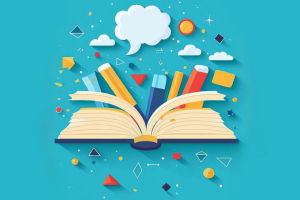
In the vast spiritual landscape of Hindu, symbols are not mere artistic expressions—they are portals to profound metaphysical truths.
Among these sacred symbols, the Damru, a small two-headed drum wielded by Lord Shiva, holds a place of exceptional reverence.
Far more than a musical instrument, the Damru is a powerful emblem of cosmic rhythm, duality, and transcendence.
The Damru: More Than Meets the Eye
At first glance, the Damru appears to be a simple percussion instrument. But in the hands of Mahadeva, the great Lord Shiva, it becomes an instrument of creation, dissolution, and transformation. This hourglass-shaped drum, often seen in depictions of Shiva performing the Tandava—his celestial dance—symbolizes the heartbeat of the universe.
The Damru’s unique construction, with its narrow waist and symmetrical ends, embodies the union of opposites: masculine and feminine, creation and destruction, sound and silence. When played, the Damru produces a spontaneous rhythm through the vibration of attached knotted strings striking the drumheads—this is said to represent the primal sound of existence itself.
The Sound of ‘Om’ and the Vibration of the Universe
According to ancient Hindu cosmology, the first sound that emerged from the void was ‘Om’ (Aum)—a sacred syllable considered the vibrational seed of the entire cosmos. The Damru is believed to produce this very sound. In this way, every beat of the Damru becomes a cosmic pulse, echoing through the fabric of time and space.
This sound is not just symbolic—it is energetic. In the tantric and yogic traditions, sound is known as Nāda, the essence of the divine. The Damru, as a source of Nāda, is thus considered a spiritual tool for awakening higher consciousness, aligning the listener with the flow of universal energy.
The Maheshwara Sutras: Birth of Language Through Vibration
One of the most mystical associations of the Damru is its role in the origin of language, particularly Sanskrit, the mother of many Indian languages and spiritual texts. According to legend, the sound vibrations created by Shiva’s Damru gave rise to the Maheshwara Sutras, a foundational set of phonetic rules revealed to the sage Panini, the ancient Sanskrit grammarian.
These 14 sutras became the blueprint for Sanskrit grammar, demonstrating how the cosmic rhythm expressed through the Damru not only shaped the physical world but also structured divine knowledge into linguistic form. In this sense, the Damru doesn’t just create—it orders and communicates the cosmos.
Symbolism of the Damru: Duality and Non-duality
The Damru’s two sides represent duality—a central concept in Hindu philosophy. They embody opposites:
- Shiva and Shakti.
- Matter and spirit.
- Time and timelessness.
Yet, these dualities are held in balance by the central handle—the axis of unity—symbolizing that all polarities are ultimately reconciled in Brahman, the absolute reality. This reflects the Advaita Vedanta teaching that while the world may appear dual, at the highest level, all is one.
The Damru in Modern Spiritual Practice
Today, the Damru continues to be used in temples, rituals, and meditative practices. It is especially prominent during Mahashivaratri, a sacred night dedicated to Lord Shiva. Devotees may chant mantras while playing or listening to the Damru, using its rhythm to enter trance states, enhance concentration, or invoke the presence of Shiva’s energy.
Spiritual seekers view the Damru as a tool of transformation, helping them resonate with the cosmic rhythm and align with the divine flow of life. The instrument invites the practitioner to let go of attachment, embrace change, and recognize the interconnectedness of all existence.
In every beat of Lord Shiva’s Damru lies a profound truth—the universe is not static but a living symphony of cycles. Through creation and destruction, sound and silence, duality and unity, the Damru teaches us to embrace the dance of life with awareness and surrender.
As we chant "Om Namah Shivaya" and listen to the sacred drum’s rhythm, we are reminded of our place within the cosmic dance—a reminder that we, too, are instruments of the divine, echoing the eternal rhythm of the universe!


